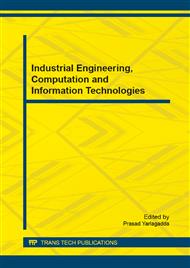p.433
p.437
p.442
p.449
p.453
p.459
p.463
p.471
p.475
Image Classifying Based on Cost-Sensitive Layered Cascade Learning
Abstract:
Image Classification is an important means of image processing, Traditional research of image classification usually based on following assumptions: aiming for the overall classification accuracy, sample of different category has the same importance in data set and all the misclassification brings same cost. Unfortunately, class imbalance and cost sensitive are ubiquitous in classification in real world process, sample size of specific category in data set may much more than others and misclassification cost is sharp distinction between different categories. High dimension of eigenvector caused by diversity content of images and the big complexity gap between distinguish different categories of images are common problems when dealing with image Classification, therefore, one single machine learning algorithms is not sufficient when dealing with complex image classification contains the above characteristics. To cure the above problems, a layered cascade image classifying method based on cost-sensitive and class-imbalance was proposed, a set of cascading learning was build, and the inner patterns of images of specific category was learned in different stages, also, the cost function was introduced, thus, the method can effectively respond to the cost-sensitive and class-imbalance problem of image classifying. Moreover, the structure of this method is flexible as the layer of cascading and the algorithm in every stage can be readjusted based on business requirements of image classifying. The result of application in sensitive image classifying for smart grid indicates that this image classifying based on cost-sensitive layered cascade learning obtains better image classification performance than the existing methods.
Info:
Periodical:
Pages:
453-458
Citation:
Online since:
December 2014
Authors:
Price:
Сopyright:
© 2015 Trans Tech Publications Ltd. All Rights Reserved
Share:
Citation:


